When Was Gold Cheapest? | Historical Gold Price Charts and Analysis
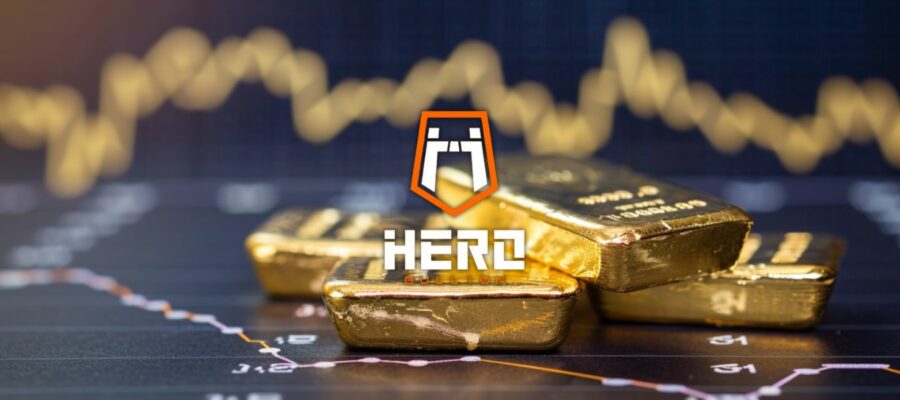
When was gold cheapest? If prices are adjusted for inflation, the lowest gold spot price in the past 100 years happened in September 1970, when the metal traded at $289.41 per troy ounce.
With gold prices hovering near yet another all time high, it’s hard to believe that the precious metal once traded at a measly $20 (pre-inflation). But gold’s prices have climbed considerably in the past 100 years. To celebrate (or bemoan) gold’s latest record-breaking price movement, the Bullion Academy is taking a look at some of gold’s biggest highs and lows.
On this page, readers will find a full breakdown of historical price trends for gold. As the world’s most popular precious metal, gold bullion prices have fluctuated constantly over the course of the last century. Accurately tracking gold prices over one century of market movement is a difficult task – we’ll walk readers through everything they know about gold’s wild price history.
Gold – Historical Price Charts
When was gold cheapest historically? Using gold spot price data ranging from 1923-2023, investors can analyze gold’s peaks and valleys.
Here’s a breakdown of gold’s price movements from 1923 until 2023:
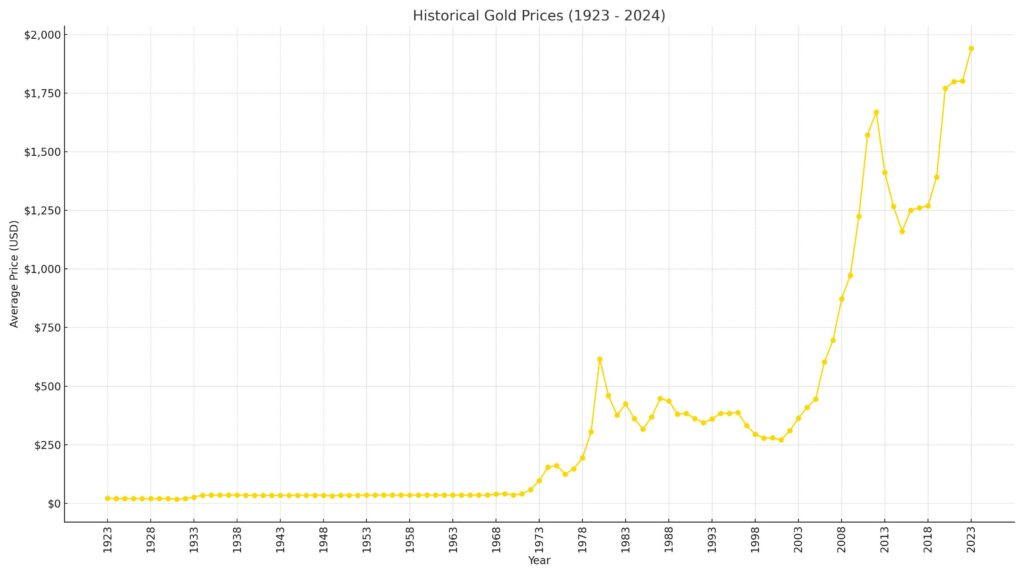
Major movements in gold’s price from 1933-2023 reveal quite a bit about both U.S. and international events.
Until 1933, the United States Dollar’s value was pegged to the price of gold. Gold prices were relatively stable until 1933, when FDR removed the U.S. from the gold standard. Because of the gold standard’s effects on regulating the value of gold, gold spot prices remained consistent at around $20.67 per troy ounce from 1923 until 1933.
1971 marked another major turning point in historical gold prices. The “Nixon Shock” was a radical series of economic reforms that Nixon hoped would combat increasing inflation in the United States. Before the “Nixon Shock,” international USD holders could convert their paper currency into gold. Nixon unilaterally ended this system, which officially ended the last vestiges of the gold standard.
After Nixon decoupled the United States Dollar from gold, the metal’s spot price began climbing rapidly. 1980 was a major high for gold. Revolution in Iran, Soviet military intervention in Afghanistan, rising oil prices, and high inflation rates set the groundwork for gold’s massive price spike.
In January of 1980, gold smashed a decades-old all time high and traded at $850 per ounce.
Gold corrected and remained relatively stable until 2001, when the metal started soaring in spot price at an unprecedented rate.
So when was gold cheapest? Technically, the cheapest gold of the past century was available in the 1920s. During the 20s, gold was worth $20.67/oz and remained pegged in value to the United States Dollar.
These values don’t tell the whole story, though. To really understand gold’s lowest lows and highest highs, investors need to account for inflation.
Gold Prices Adjusted For Inflation
Gold’s lowest price of the past century seems to be $20.67, which was the value of the precious metal during the mid and late 1920s. Gold didn’t hit its true rock bottom until much later. The best way to quantify gold’s cheapest price historically is to adjust the precious metal’s price trends for inflation.
Not sure how to do that? We’ve got you covered. Here’s an inflation-adjusted graph displaying gold prices over the past 100 years:
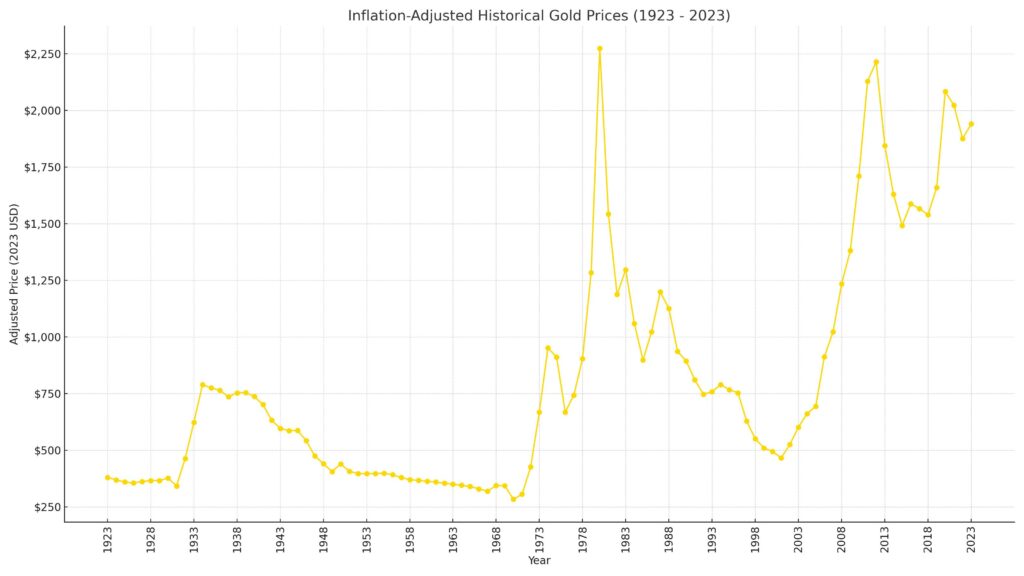
Like in the unadjusted graph, gold prices were certainly very low during the 1920s. However, the stackers who came before us didn’t exactly have the dirt-cheap gold that the previous chart led us to believe. Gold still cost around $300 per ounce in the 1920s, although gold spot prices spiked considerably right before – and directly after – FDR eliminated the U.S. gold standard.
Two notable price movements become clearer when our chart is adjusted for inflation. First, we have a new all time low for gold. When was gold cheapest? The actual cheapest year for gold came in September 1970. During September of 1970, gold traded at an unprecedented $289.41 per troy ounce in today’s money. Technically, this is even cheaper than the gold prices investors enjoyed back when gold was generally pegged to the value of the U.S. Dollar!
Another shocker when we take a look at the inflation-adjusted historical price chart for gold: gold’s true all-time high actually happened in the early 1980s.
Like we mentioned earlier, a series of geopolitical conflicts, rising oil prices, and inflation contributed to a massive price spike for gold. In early 1980, gold reached a record high and traded at over $2,250 per troy ounce. For those keeping track, that’s almost $100 more expensive than gold’s recent all-time high.
While the precious metal hit a new numerical high in March of this year, gold’s real all-time high when we adjust for inflation was in 1980.
How is Gold’s Spot Price Determined?
Gold spot prices are determined primarily by supply and demand dynamics and geopolitical factors. Supply and demand explains many of gold’s price movements, but smart investors also consider geopolitical factors. Geopolitical conditions like global conflict, traditional economic indicators, and international relations can impact the value of gold.
Supply and Demand
Supply and demand is the most important indicator of gold’s spot price. When demand is high for gold, prices (and premiums) increase. When investors are bullish on traditional assets like stocks and bonds, gold’s spot price goes down.
Supply can also play an important role in determining gold prices. Occasionally, conflicts or regulations diminish the global supply of available gold by temporarily shutting down mines. Gold investors should watch the news to make an educated guess about whether gold prices might go up or down. Investors who read that prominent mints might be shutting down should feel confident that gold prices will climb as supply shortages begin to rock the market.
But supply and demand does not exist in a vacuum. A vast number of geopolitical factors can influence the demand for – and supply of – gold bullion.
Geopolitical Factors
A wide range of geopolitical developments can directly influence the value of gold. The historical gold price charts at the top of this page help explain the relationship between newsworthy international events and gold prices. When the Soviets intervened in Afghanistan in the 1980s, gold prices shot up.
International developments don’t always provoke a bull market for gold. Periods of sustained U.S. economic recovery have often prompted some of the lowest gold prices in history. In fact, gold’s all time low in 1970 came on the heels of increased international economic activity that characterized the late 60s. Gold’s low period was short lived – the mid to late 1970s saw some of the most dramatic growth in the history of gold’s spot price.
Even today, geopolitical developments are an excellent barometer for investors wondering where gold prices are headed. Wars in both Gaza and Ukraine paired with rumors of Fed Reserve interest rate reductions to catapult gold to a new all time high in early March 2024.
Investors should keep in mind that gold’s correlation with core economic indicators looks a lot different than traditional investments like stocks and bonds. In traditional markets, assets tend to appreciate when inflation is low, interest rates are high, and unemployment is low. Gold is often the opposite.
Since gold is a safe haven asset, investor interest in the precious metal peaks during periods of economic downturn, geopolitical strife, and general insecurity. In other words, the biggest booms in gold’s price have historically happened when things look bad for the rest of the economy.
This isn’t always the case. Occasionally, gold moves sideways or even down when traditional economic indicators are less-than-promising. In 2024, gold bulls find themselves in an interesting double-bind. While lower interest rates would likely be good for gold, Fed Reserve Chair Jerome Powell says these rate cuts will only happen if the economy continues to move in the right direction.
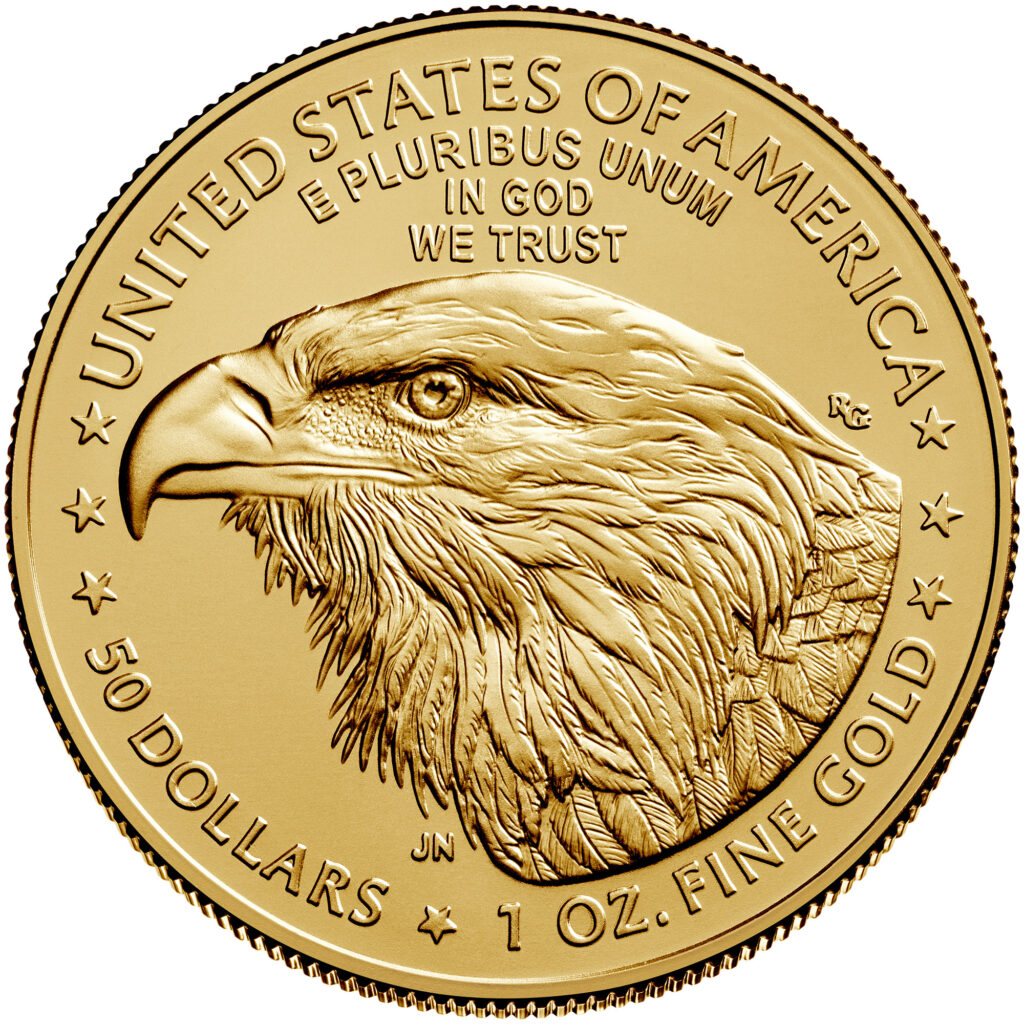
Will gold increase in value if interest rates decrease, or will promising economic signals turn most investors toward more traditional assets? It’s tough to say. In any case, investors should take our historical case study of gold prices as evidence that the news might reveal more about where gold prices are heading than we initially thought.
Gold as a Safe Haven Asset
Gold is considered a safe haven asset because it tends to retain value during troubling economic times. Especially during periods of rising inflation, gold’s intrinsic value lends itself well to investors looking to shield their assets from recession.
To some experts, gold remains the world’s best safe haven asset. Gold’s value is non-correlated with most of the traditional indicators that move prices in the stock market, which makes it a fantastic asset for portfolio diversification.
Investors should be cautious about putting too much of their money into gold. Generally, financial advisors recommend putting no more than 10% of your investable assets into gold bullion. The right amount of money to invest in gold depends on several factors, including an investor’s age, risk tolerance and investing objectives.
Still, gold’s reputation as a safe haven asset is one of the best in the world of investing. Gold has weathered most of the world’s biggest economic storms, and it continues to perform exceptionally well under pressure.
Current Gold Prices
2024 has been a fantastic year for gold so far. The precious metal soared to new heights in early March, reaching a new all-time high. Most of the gold’s recent price explosion has to do with three factors:
- Wars in Gaza and Ukraine
- Uncertain U.S. inflation numbers; and
- Rumors of interest rate cuts from the Fed
Gold’s biggest price movements prior to 2024 came in 2023 following Russia’s invasion of Ukraine. While the market seemed to settle marginally in mid-2023, the final months of the year saw the beginnings of another war, this time between Israel and Hamas, a terrorist Palestinian liberation organization in Gaza.
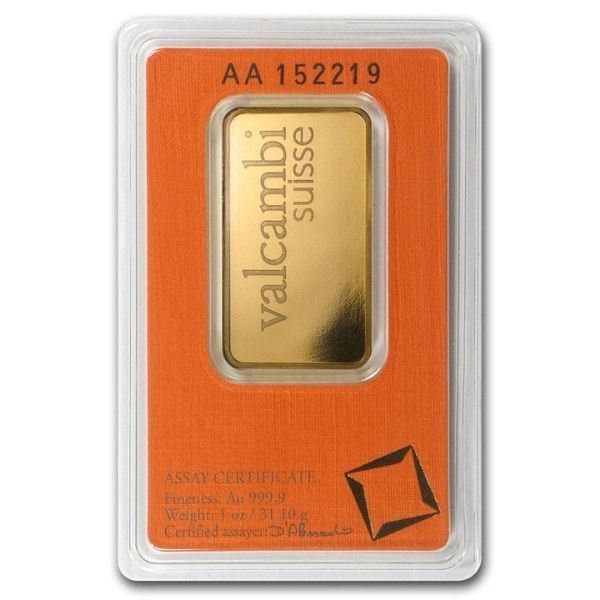
These two conflicts both imply the threat of international intervention. While the wars are relatively contained, each could potentially serve as a powder-keg for proxy wars between other nations. This possibility of global conflict escalation may be driving the appeal of precious metals, which often perform well during periods of global instability.
Uncertain inflation numbers have been both the inciter and antagonist of gold’s recent bull runs. On one hand, unpromising inflation data usually helps improve the appeal of the precious metal. But according to Jerome Powell, interest rate cuts will only happen once the economy proves it’s heading in the right direction. This puts gold in an interesting spot; interest rate cuts would provide the best ammunition for gold bulls, but troubling inflation data traditionally improves gold’s retail investor appeal.
Troubling inflation data in February stifled the hopes of gold bulls, bringing the metal’s spot price below its $2,000 support for the first time in months. Gold recovered quickly, climbing above $2,175 in March as investors continue to anticipate Fed rate cuts sometime this year.
Why is Gold So Expensive Now?
Gold’s current price run has a lot to do with speculation about how the Federal Reserve will react to the American economy’s recent recoveries. Fed Chair Powell suggested that interest rate cuts will happen at some point this year. The timing of these rate reductions depends largely on March’s inflation numbers.
If all is well and the economy appears on-track for recovery, the Fed might lower interest rates as early as next month. This would be fantastic for gold bulls; gold is negatively correlated with interest rates. Will gold prices go higher? It’s tough to tell until we have more information about whether or not the Federal Reserve feels optimistic enough to ease interest rates.
Final Thoughts: When Was Gold Cheapest?
Gold’s cheapest price numerically may have happened in the early 1920s, but the actual cheapest gold when adjusted for inflation came in September 1970, when the metal traded for less than $300/oz in today’s money.
Feel free to revisit this page for information, data, and analysis about 100 years of gold prices.
You might also be interested in:
About The Author
Michael Roets
Michael Roets is a writer and journalist for Hero Bullion. His work explores precious metals news, guides, and commentary.
